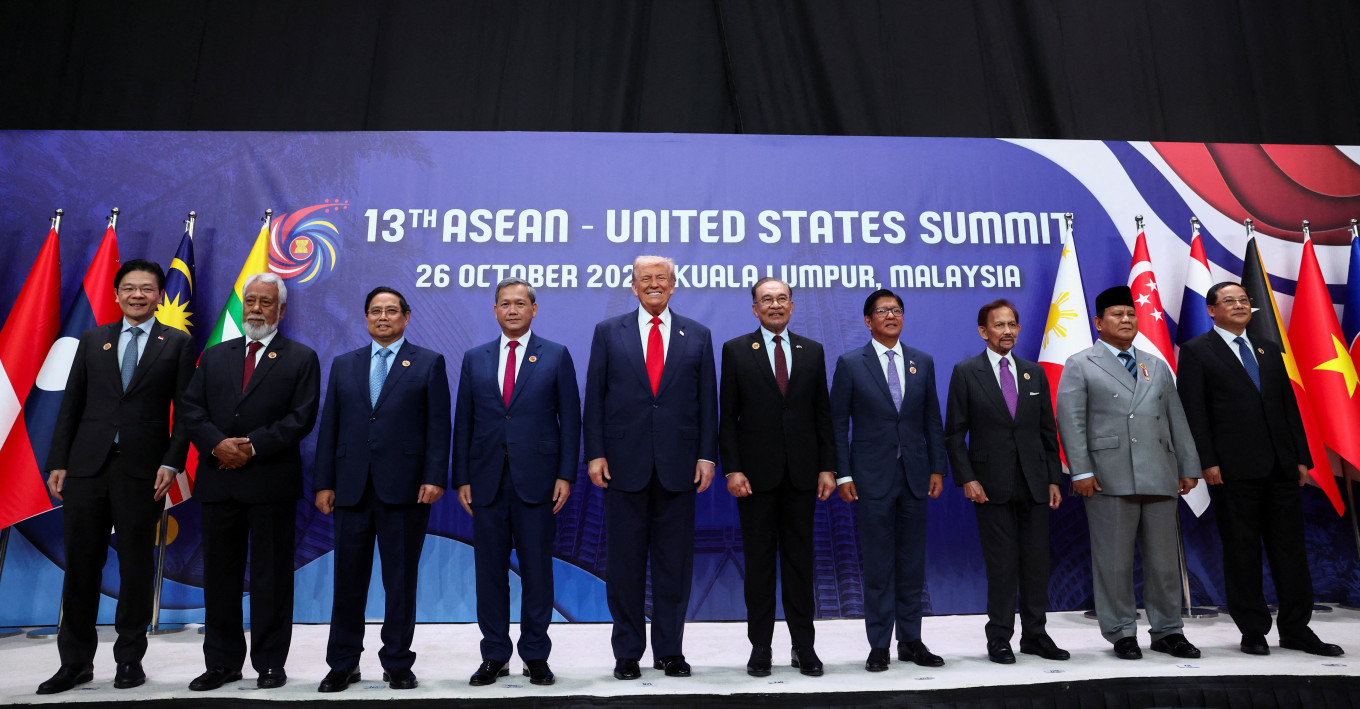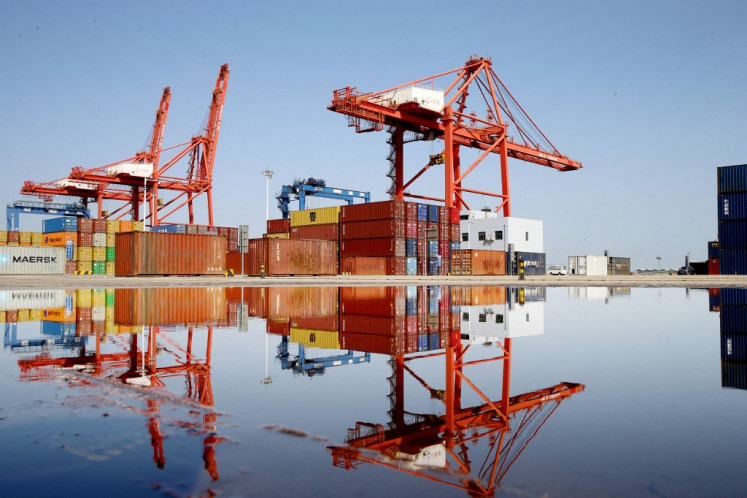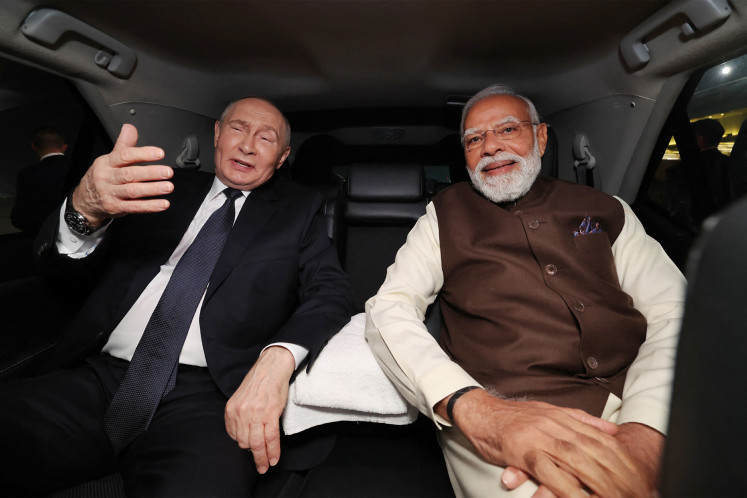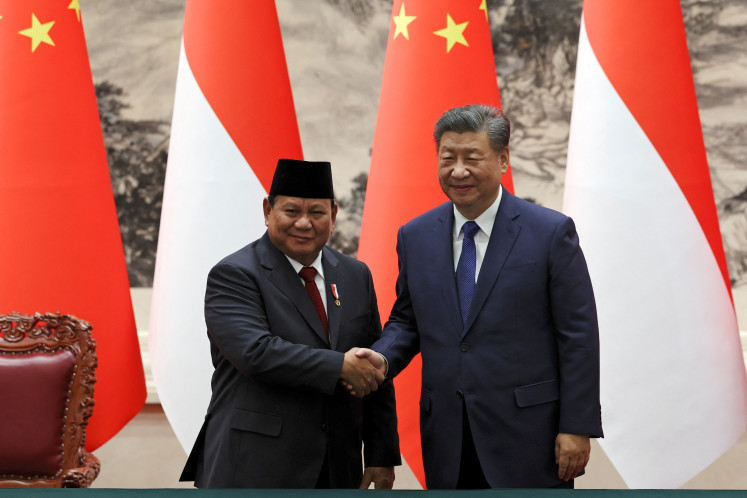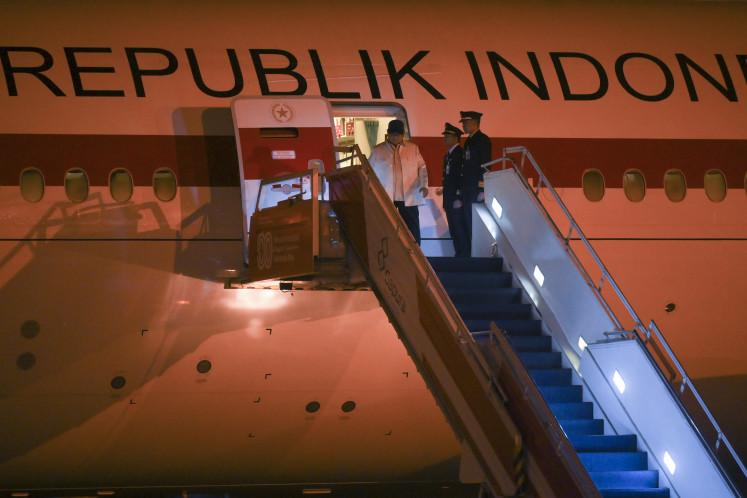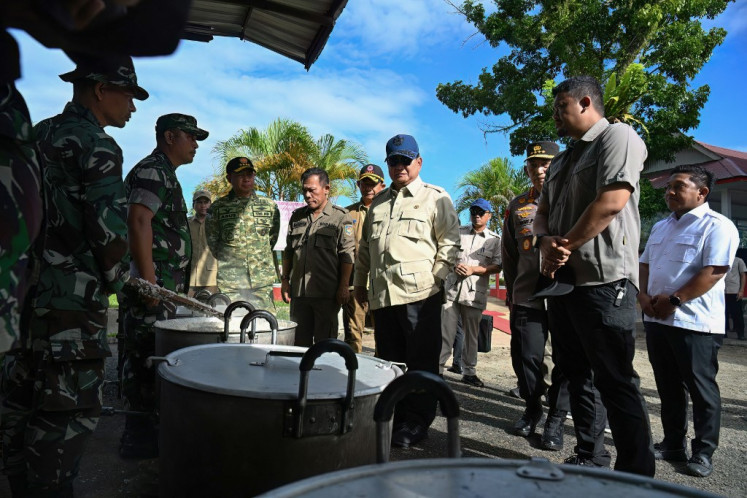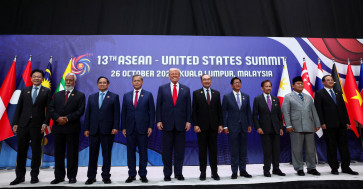Popular Reads
Top Results
Can't find what you're looking for?
View all search resultsPopular Reads
Top Results
Can't find what you're looking for?
View all search resultsASEAN’s new survival strategy: Transactional deals and hard economic realities
The region is shedding its illusions about predictable superpower diplomacy and is instead embracing a strategy that is intensely transactional and fiercely pragmatic.
Change text size
Gift Premium Articles
to Anyone
T
he ASEAN Summit’s first day in Kuala Lumpur on Sunday was more than a routine diplomatic gathering; it was a showcase in how Southeast Asia is adapting to the new reality of the great-power competition.
With United States President Donald Trump attending and presiding over a regional peace deal, the key takeaway is clear: the region is shedding its illusions about predictable superpower diplomacy and is instead embracing a strategy that is intensely transactional and fiercely pragmatic.
The days of assuming a US-led, rules-based international order are over. Southeast Asia is now actively carving out a path to ensure economic survival and strategic autonomy amid the escalating US-China trade war – a strategy built on four pillars: transactional engagement, hard-nosed pragmatism, bilateral deals and a cold calculation of economic realities.
Trump’s involvement, from threatening tariffs to secure a Thailand-Cambodia ceasefire to signing bilateral trade frameworks, defines the current US approach: diplomacy is a zero-sum negotiation, a ledger of favors and concessions.
The spectacle of the Kuala Lumpur Peace Accords, brokered under the shadow of threatened US tariffs, is the clearest illustration. While the region welcomes the stability – and Cambodia's Prime Minister even nominated Trump for a Nobel Prize – the underlying message is a warning: the US will use its economic might as a lever for political and security outcomes, potentially bypassing the collective leadership of ASEAN.
This strategy successfully compels individual states to comply with American geopolitical demands in exchange for vital market access. For the region, this is an undeniable pressure, but it is also a signal: the US is still willing to play in Southeast Asia, albeit on its own terms, even if it means trading the stability of multilateral engagement for the volatility of bilateral deals.
The more profound consequence of this strategy is the direct challenge to ASEAN centrality. The high-profile mediation of the ceasefire, conducted by the US President at the margins of the summit, placed the individual American leader – not the regional organization – at the fulcrum of conflict resolution.

